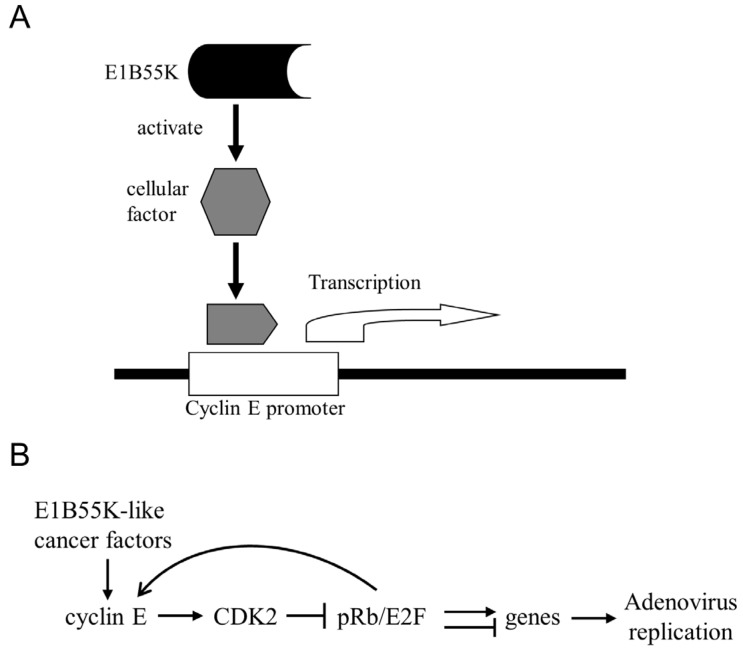Figure 2.
Cyclin E upregulation in cancer cells supports oncolytic replication of E1b55K-deleted Ads. (A) In normal cells, Ad E1B55K functions to enhance cyclin E expression for virus replication. E1B55K may target cellular factors which, in turn, activate the cyclin E promoter for induction of the gene expression. Without E1B55K-induced cyclin E expression, replication of E1b55K-deleted Ads is repressed in normal cells; (B) In cancer cells, the cellular factors may already be activated or there are E1B55K-like factors to relax cyclin E regulation. Thus, E1B55K protein is not required to induce cyclin E expression in cancer cells. Cyclin E induced by Ad infection binds to and activates CDK2, which subsequently phosphorylates the transcriptional repressor retinoblastoma protein (pRb), leading to regulative expression of multiple genes (including the feedback upregulation of cyclin E) to provide a suitable cellular environment for oncolytic replication.

